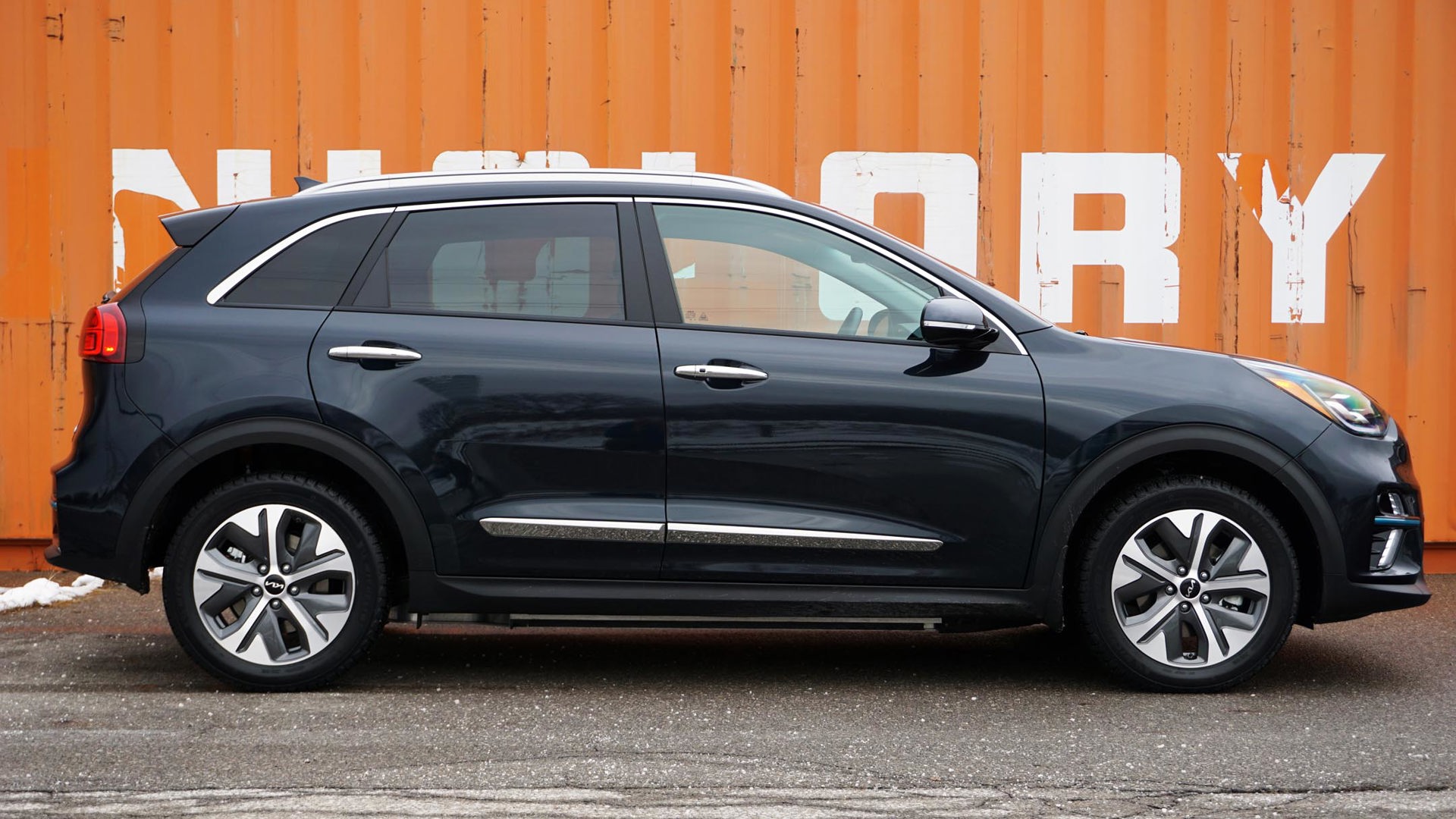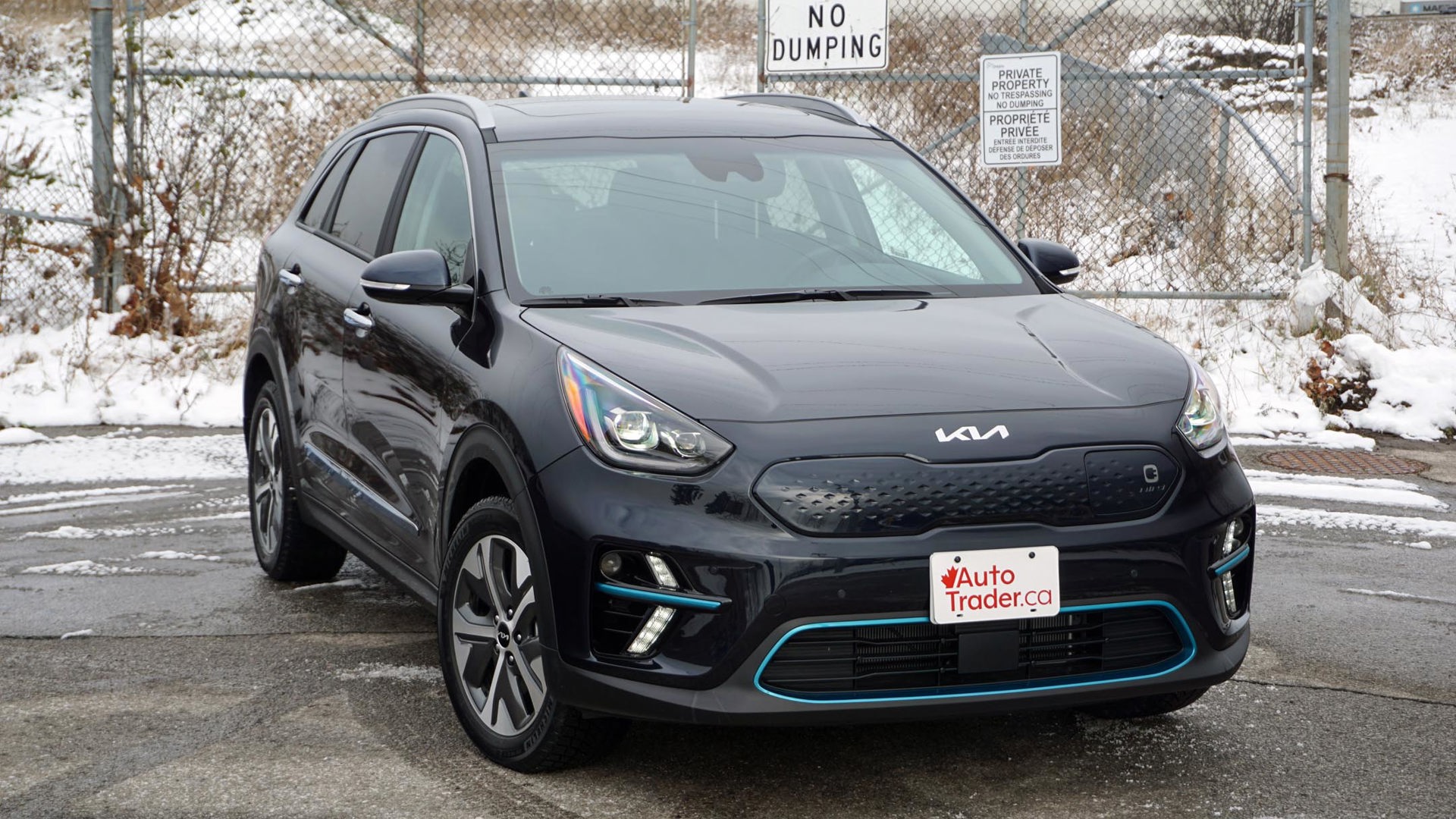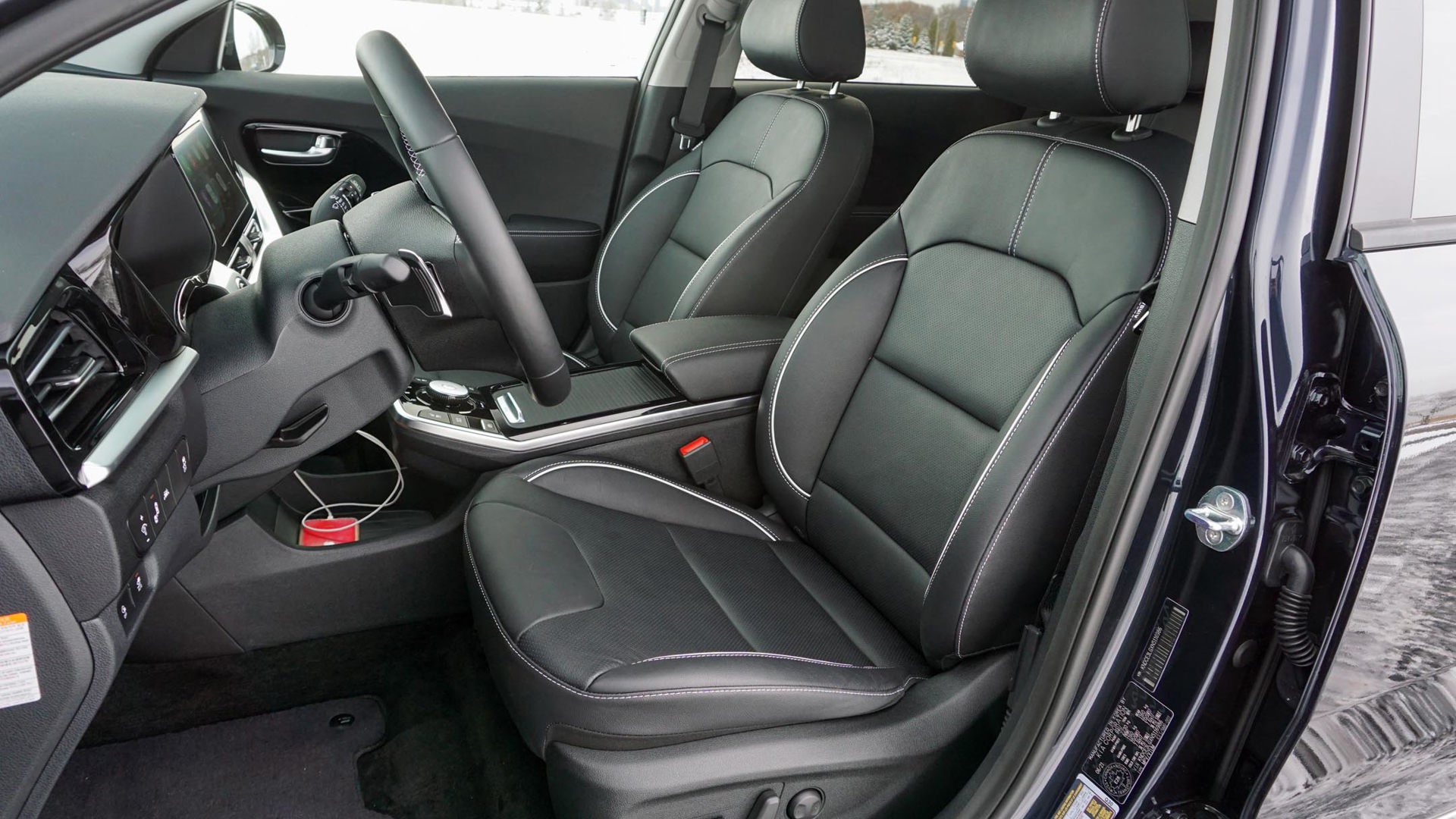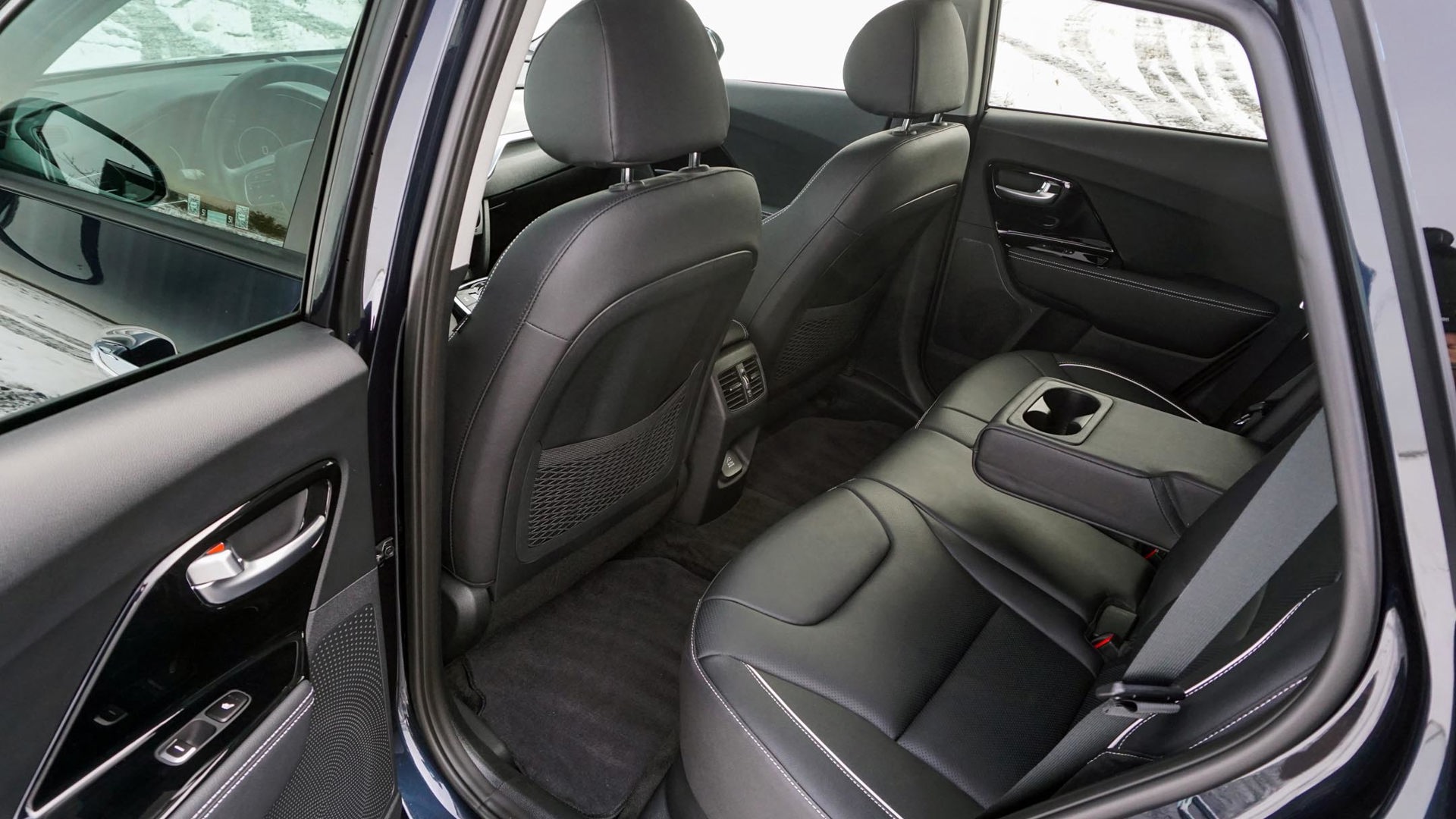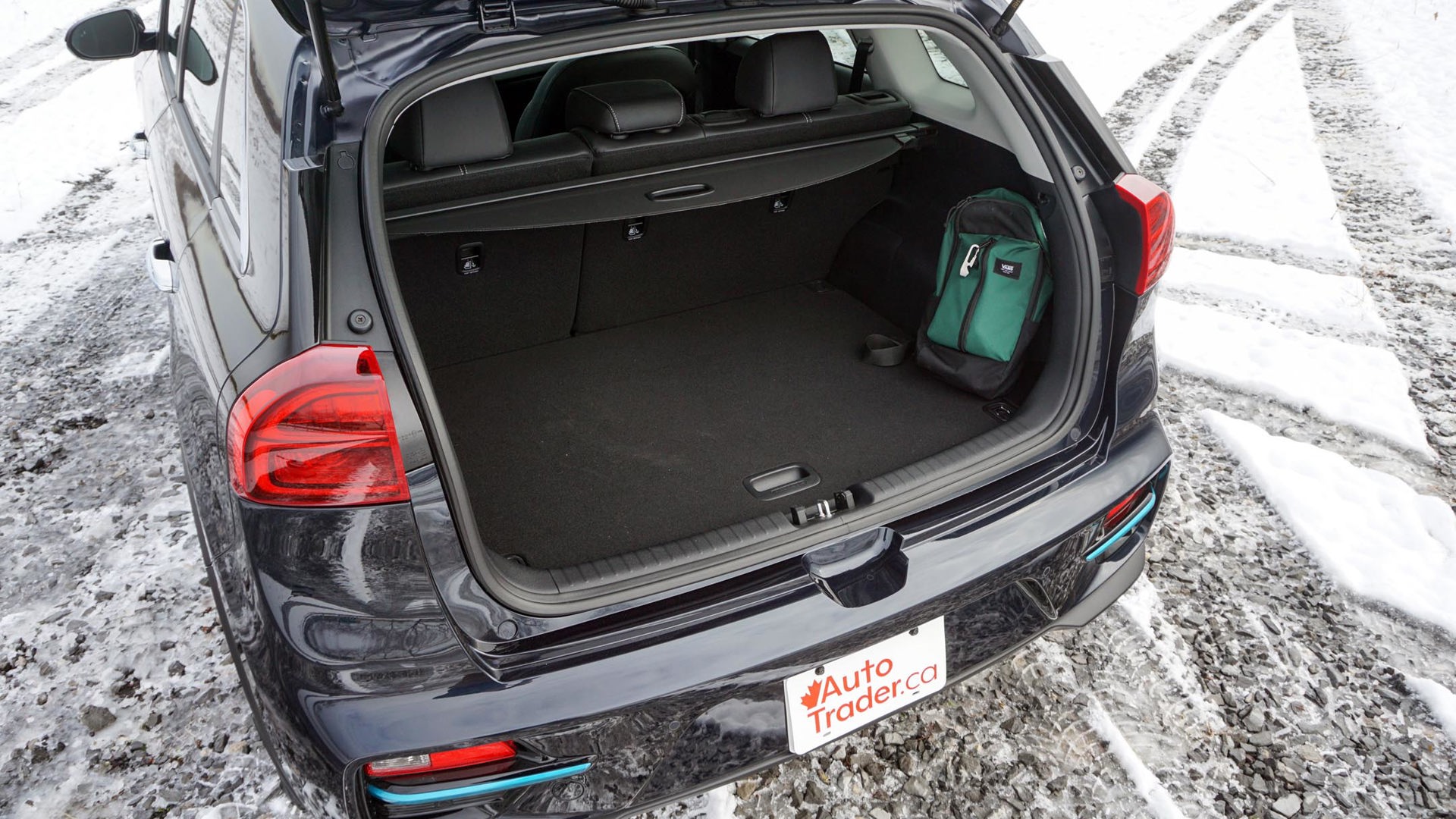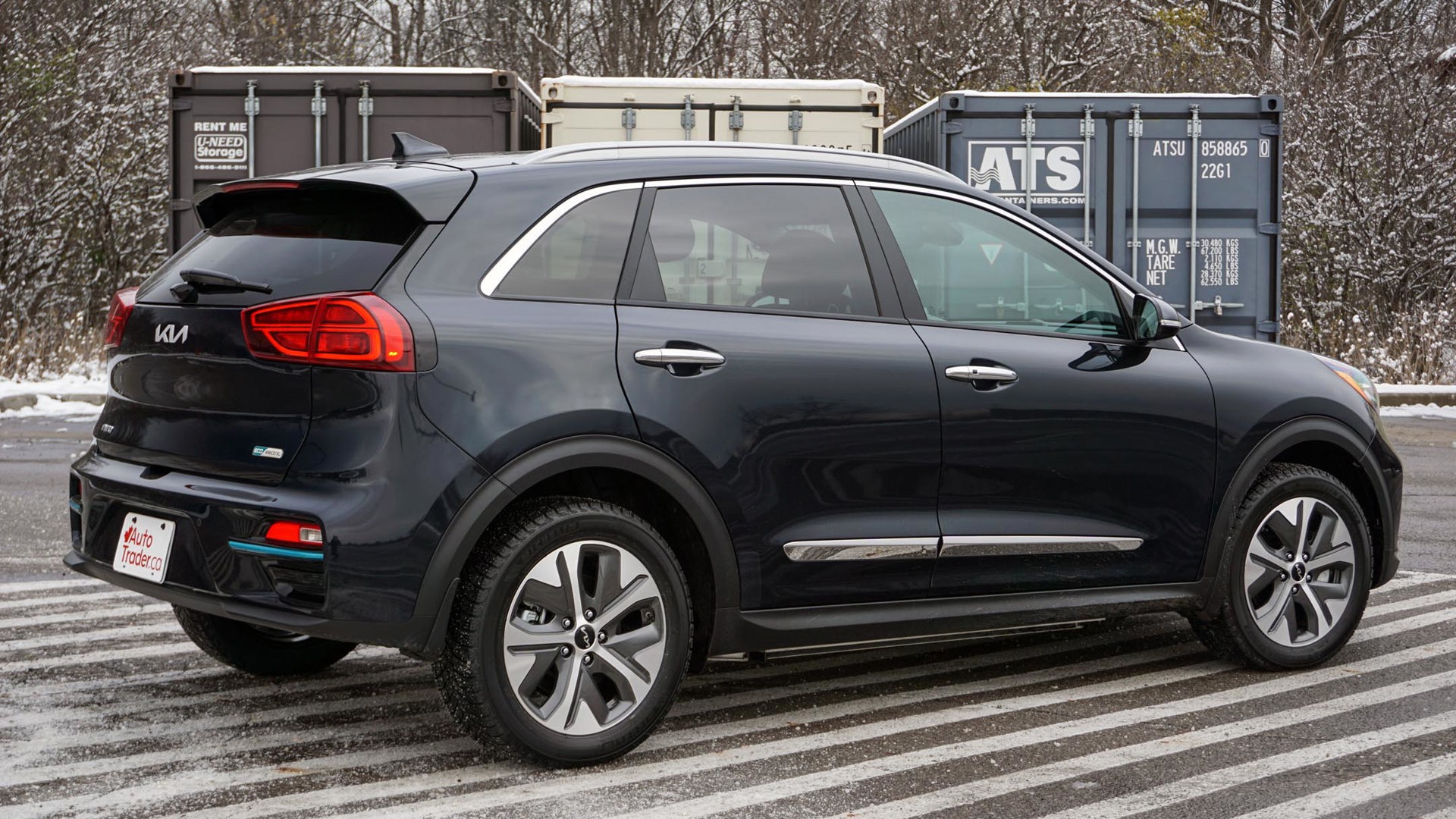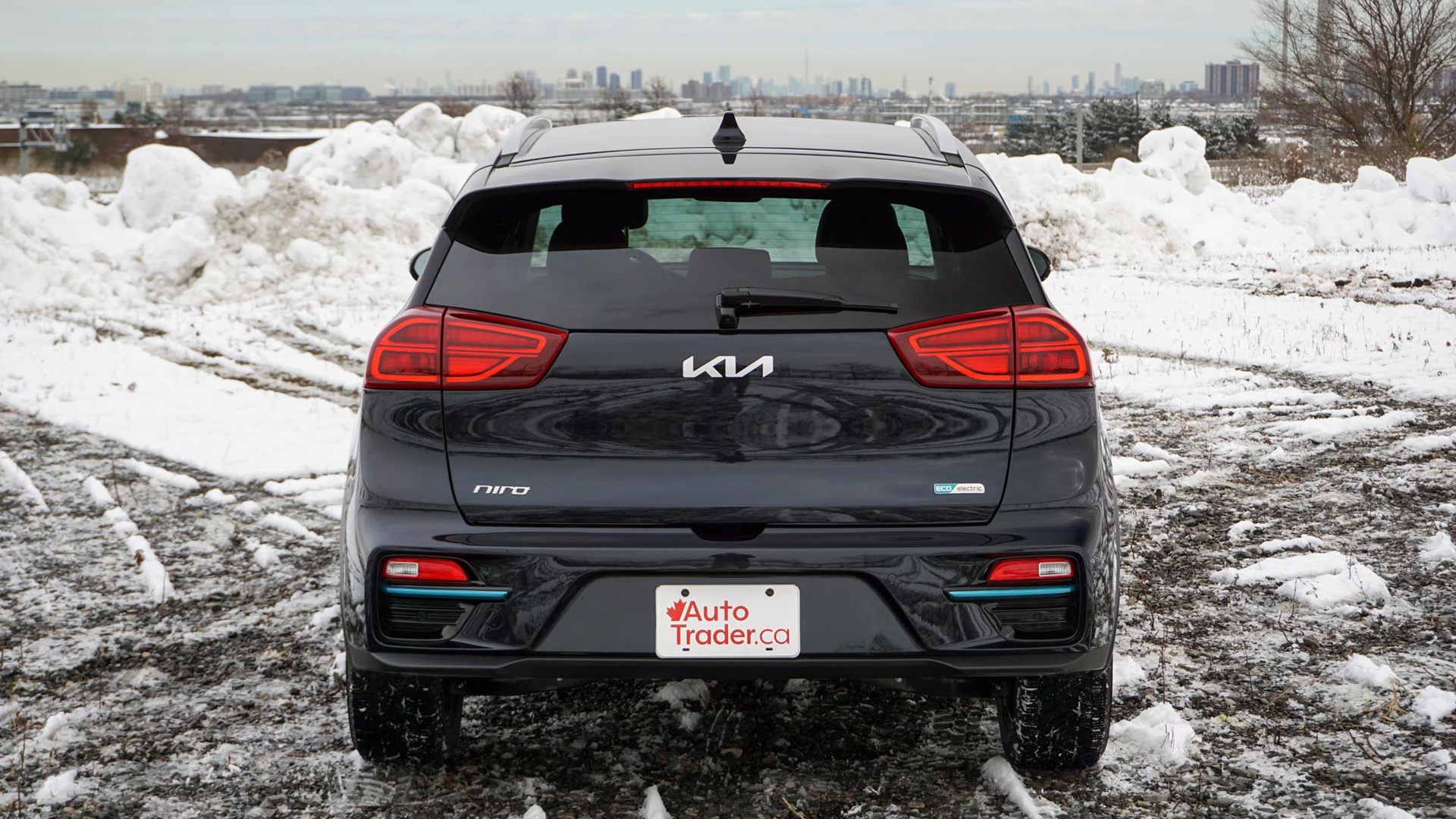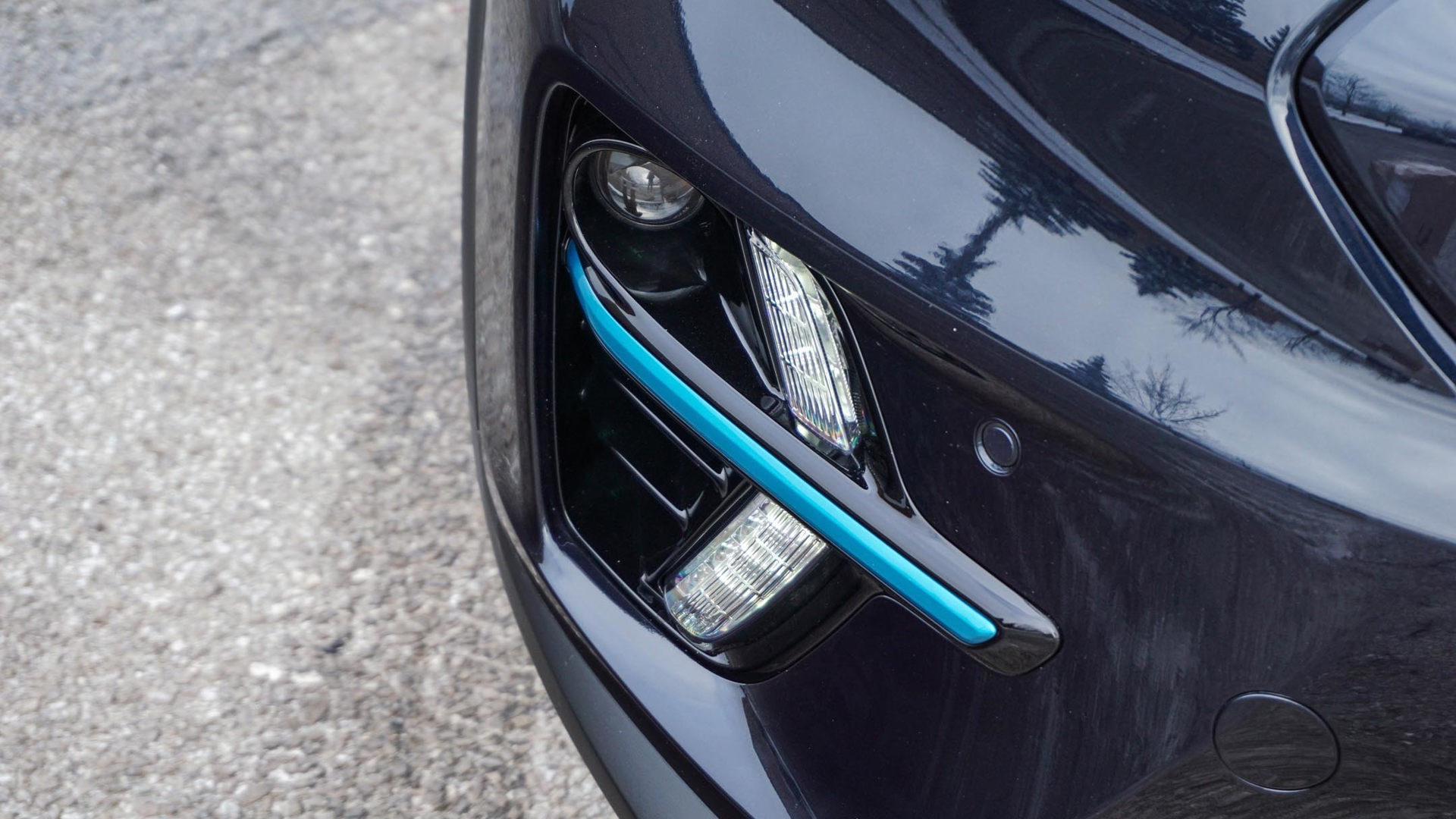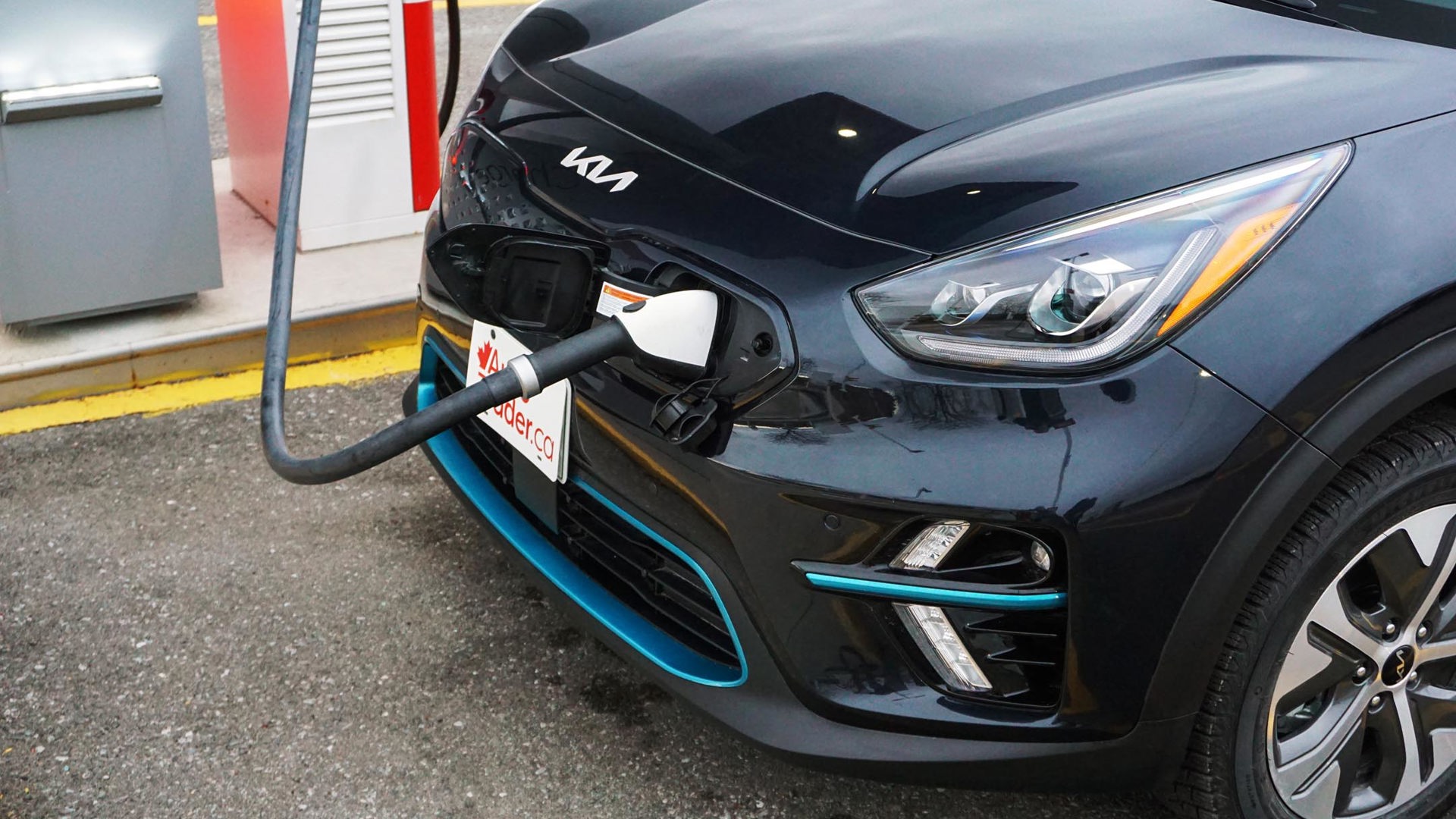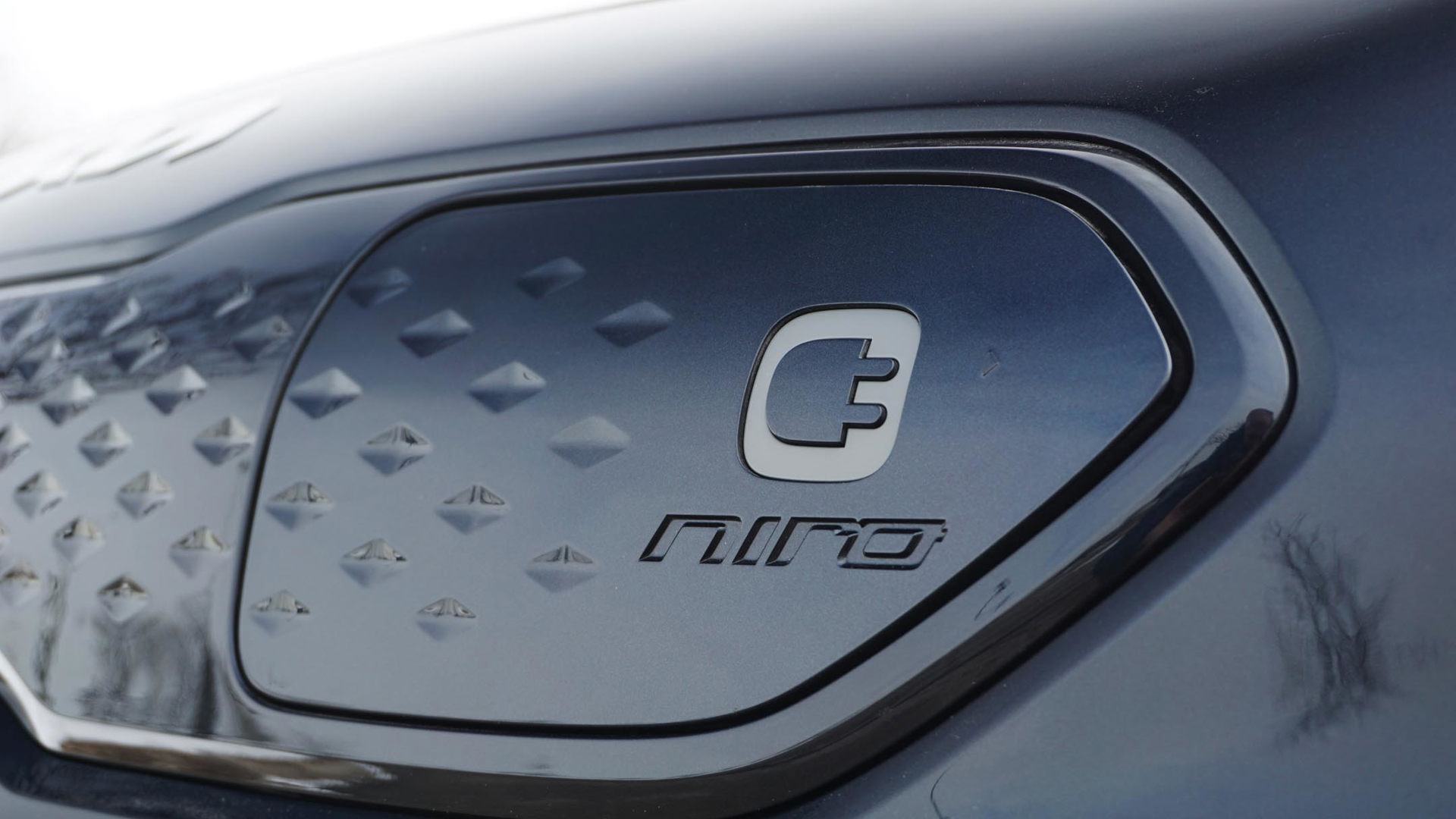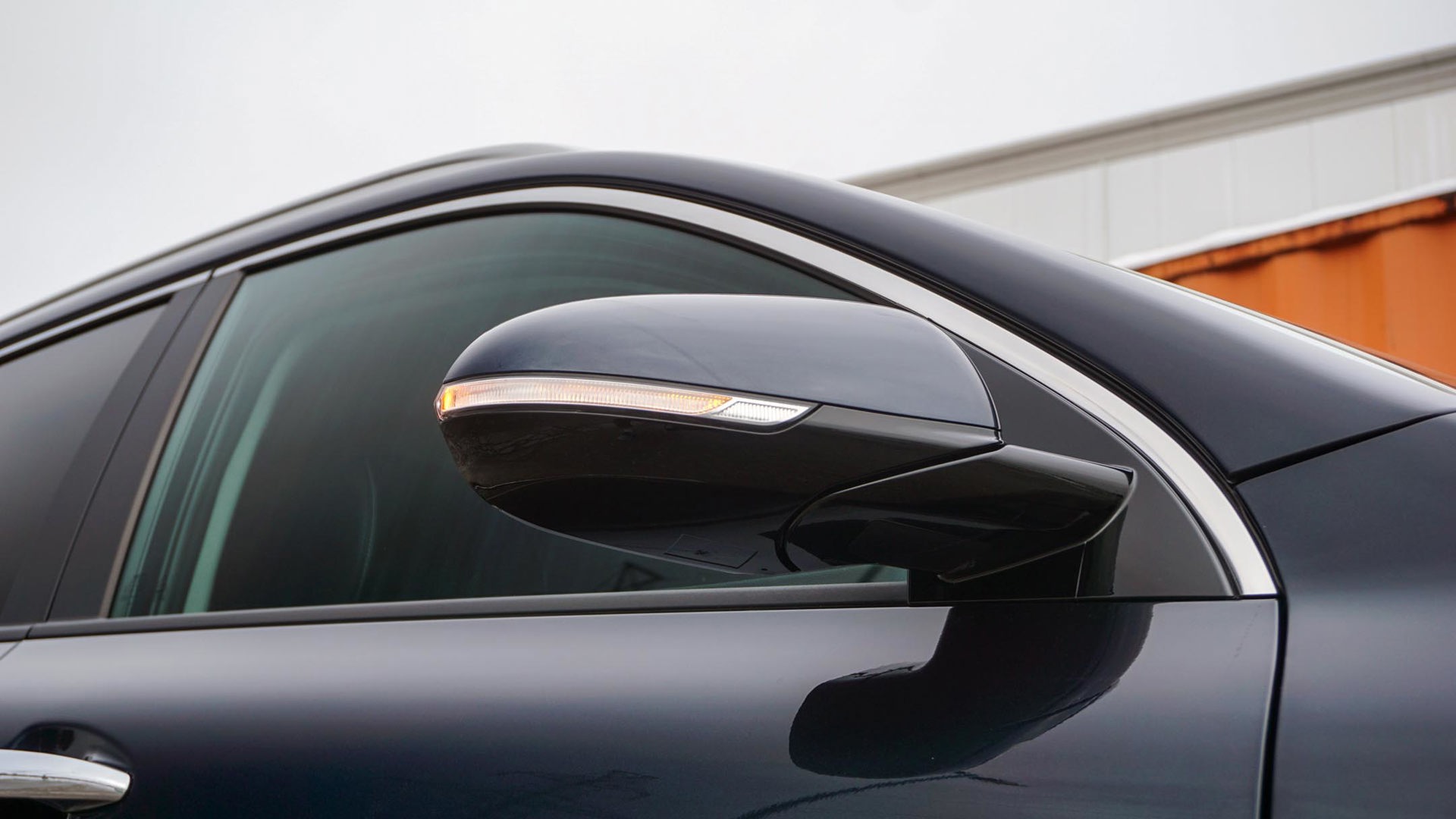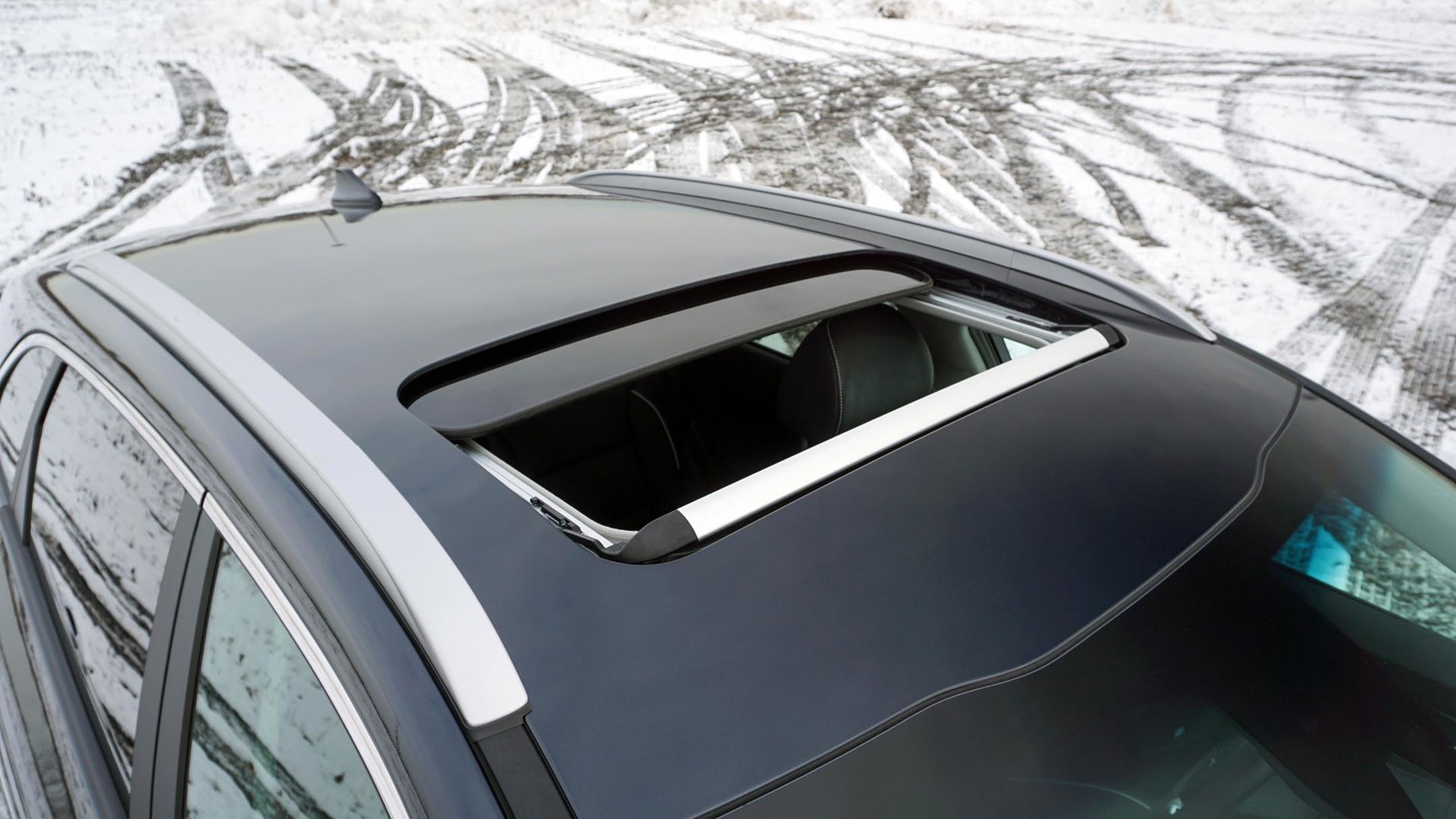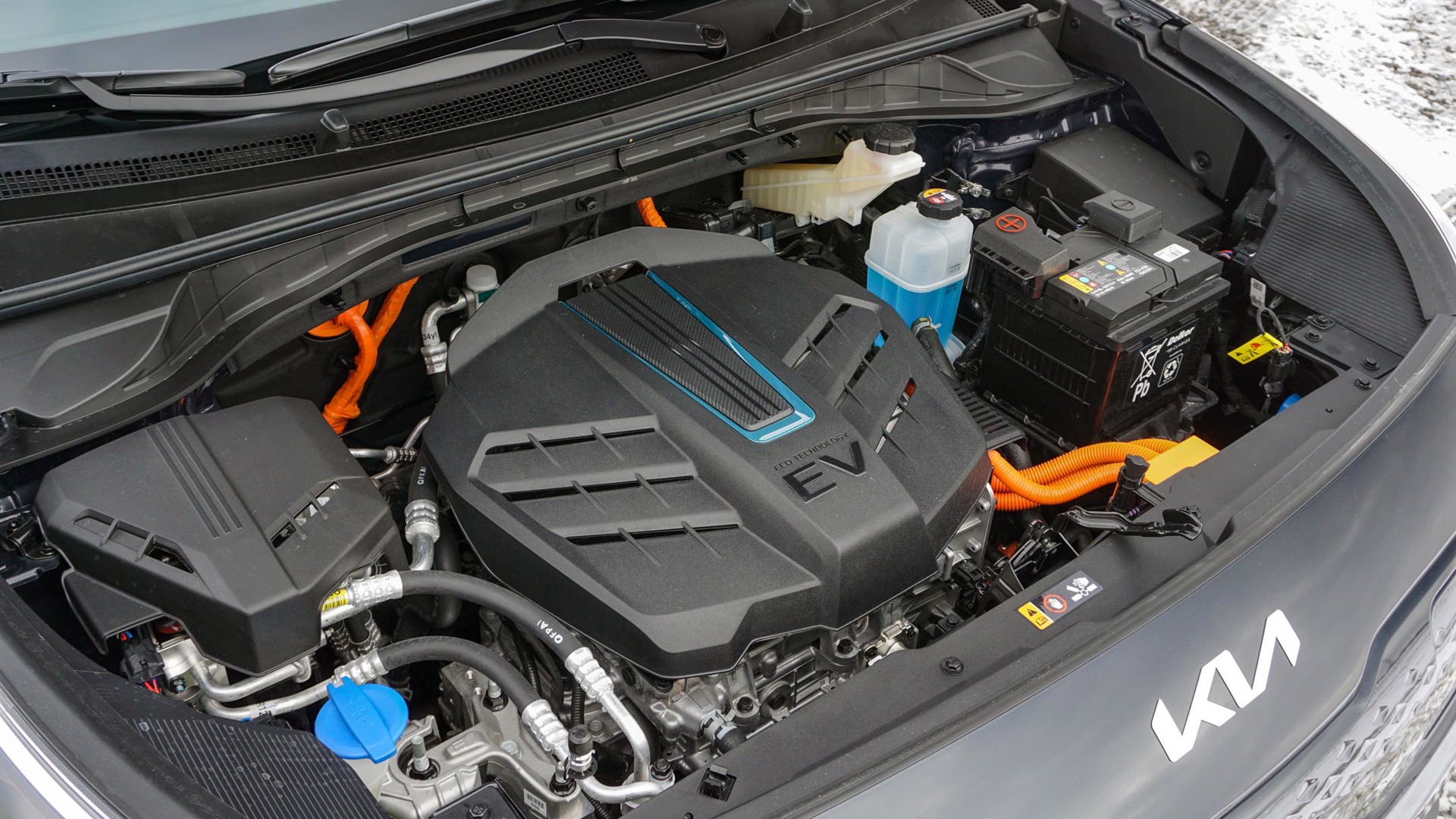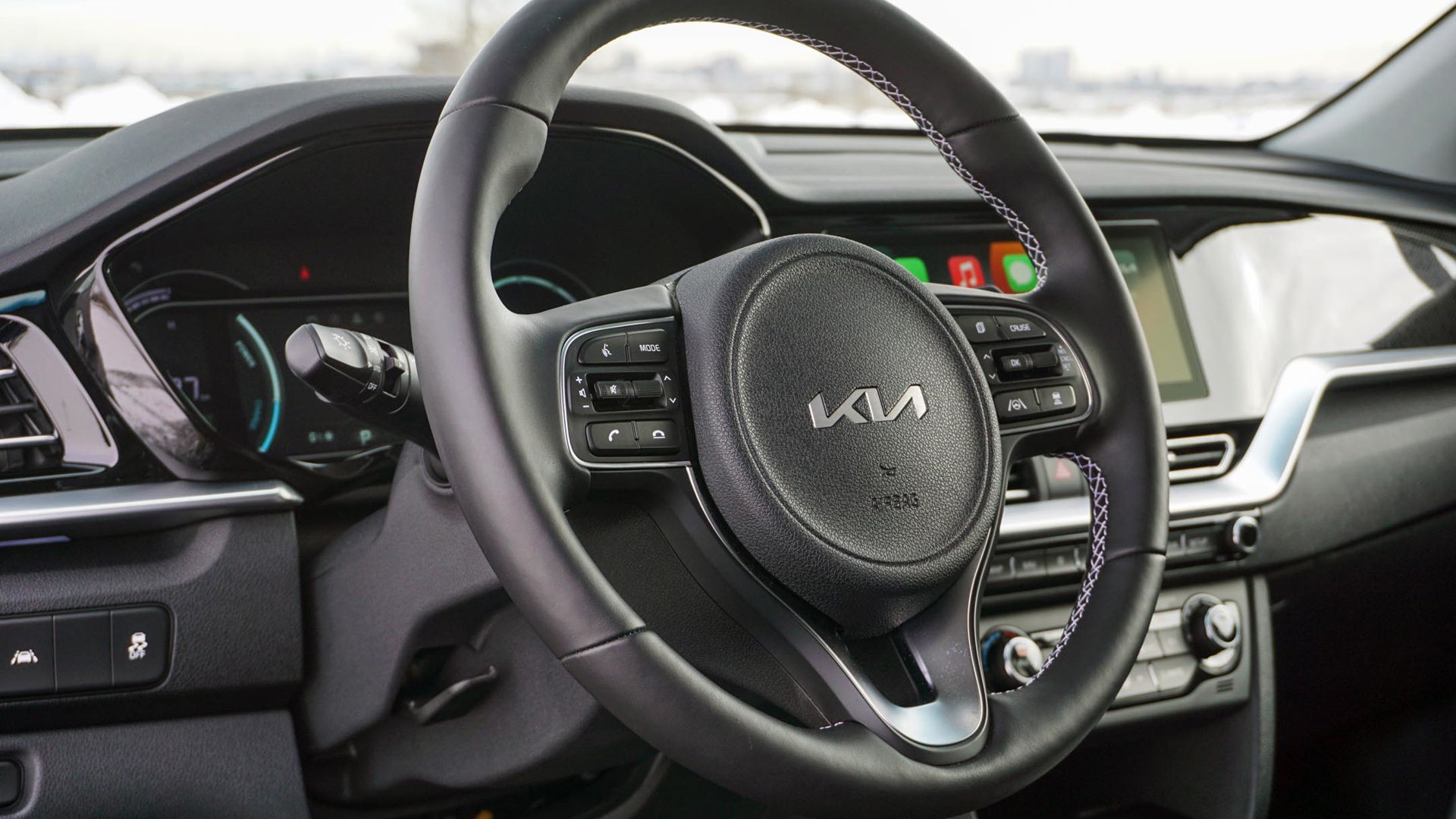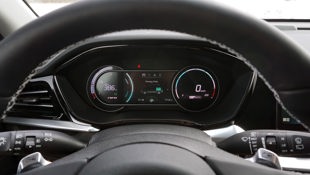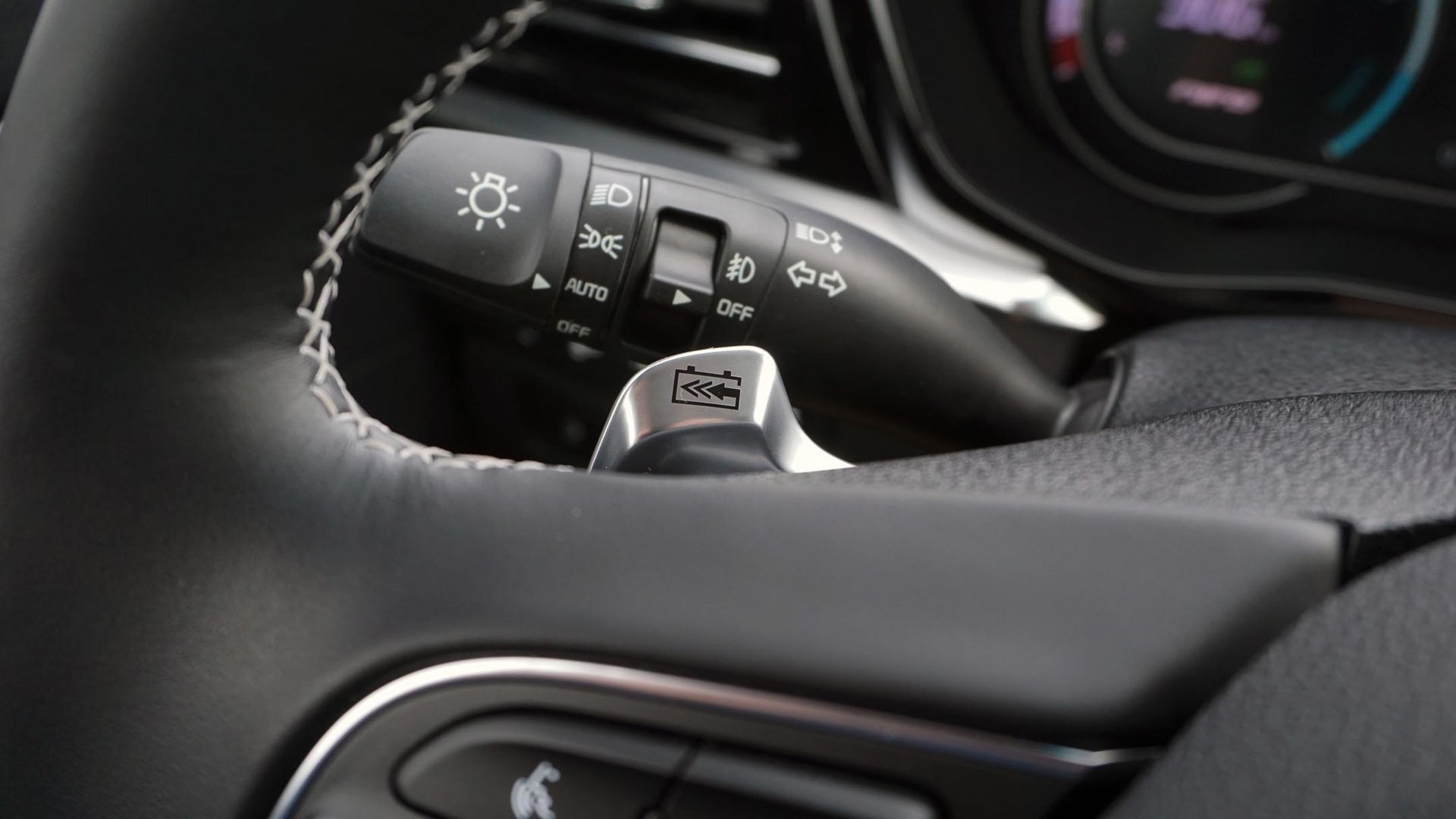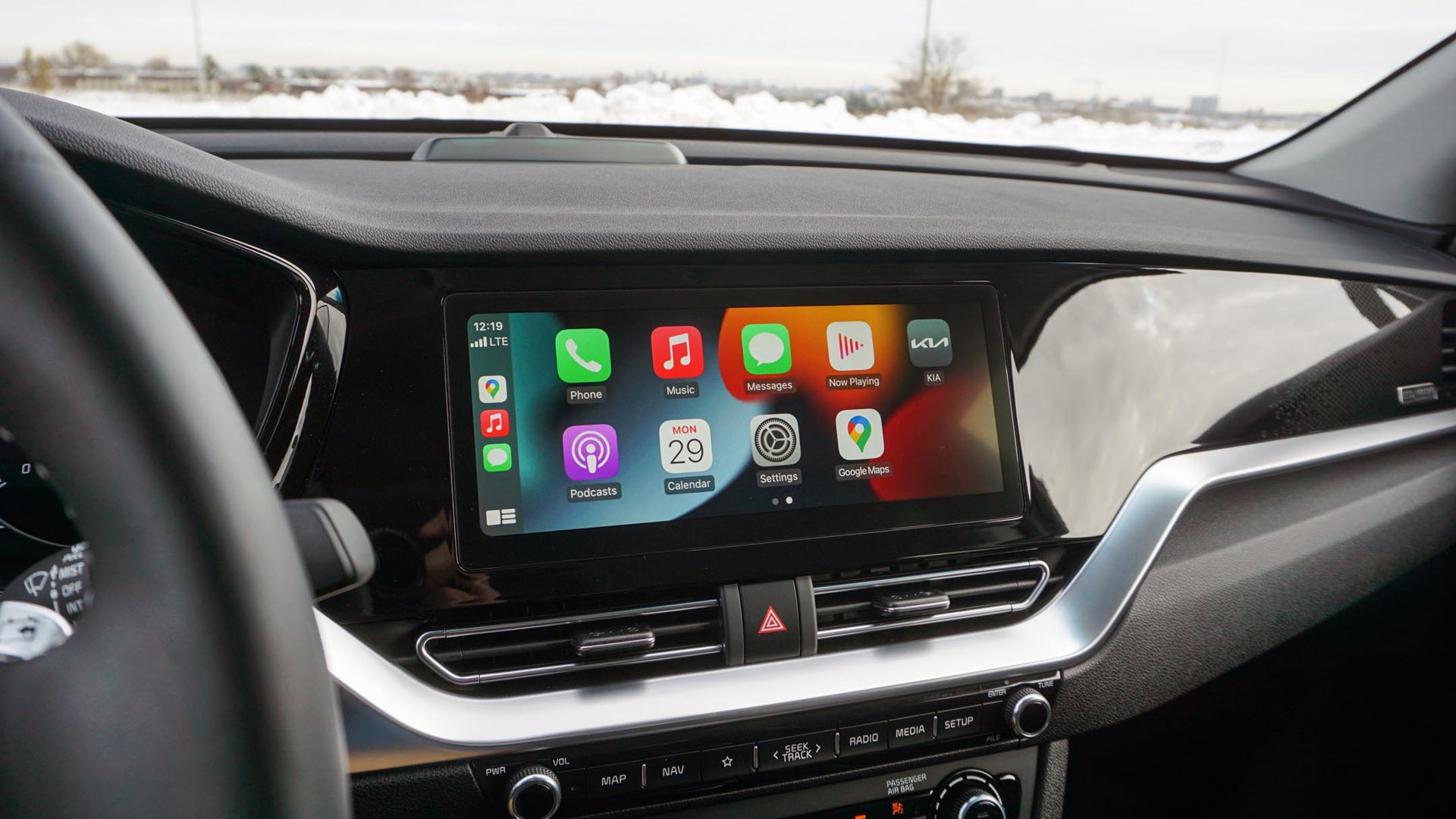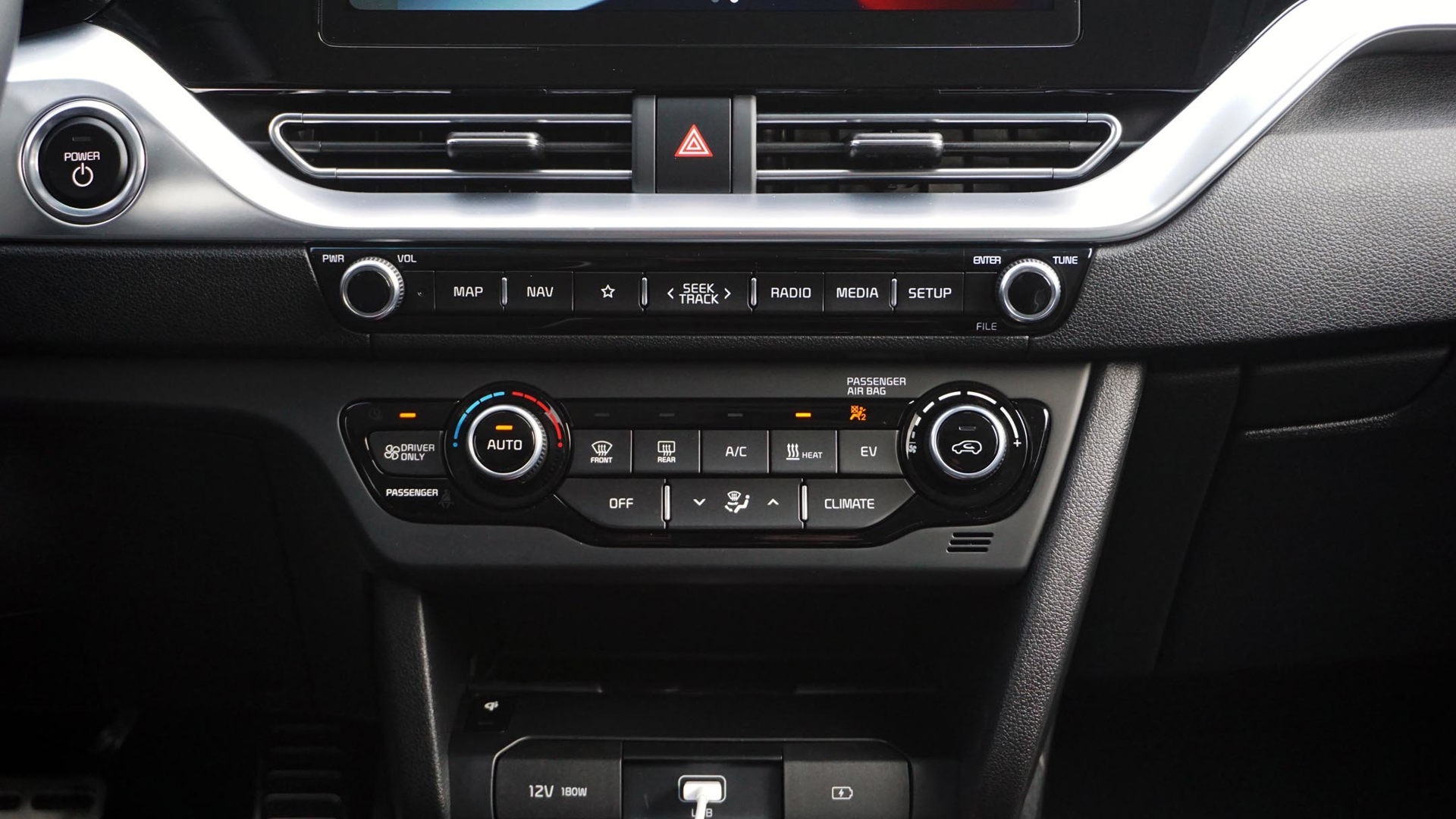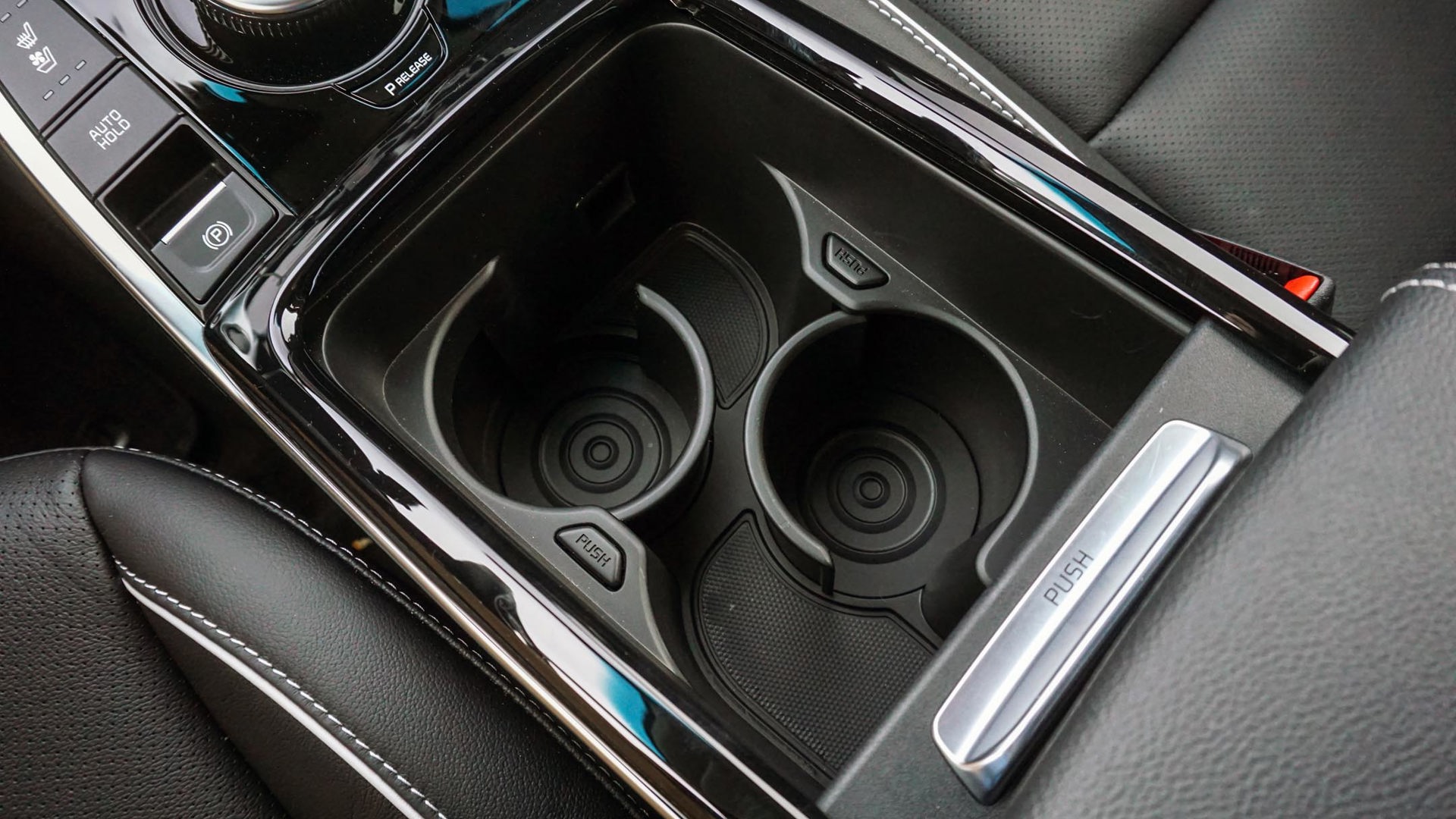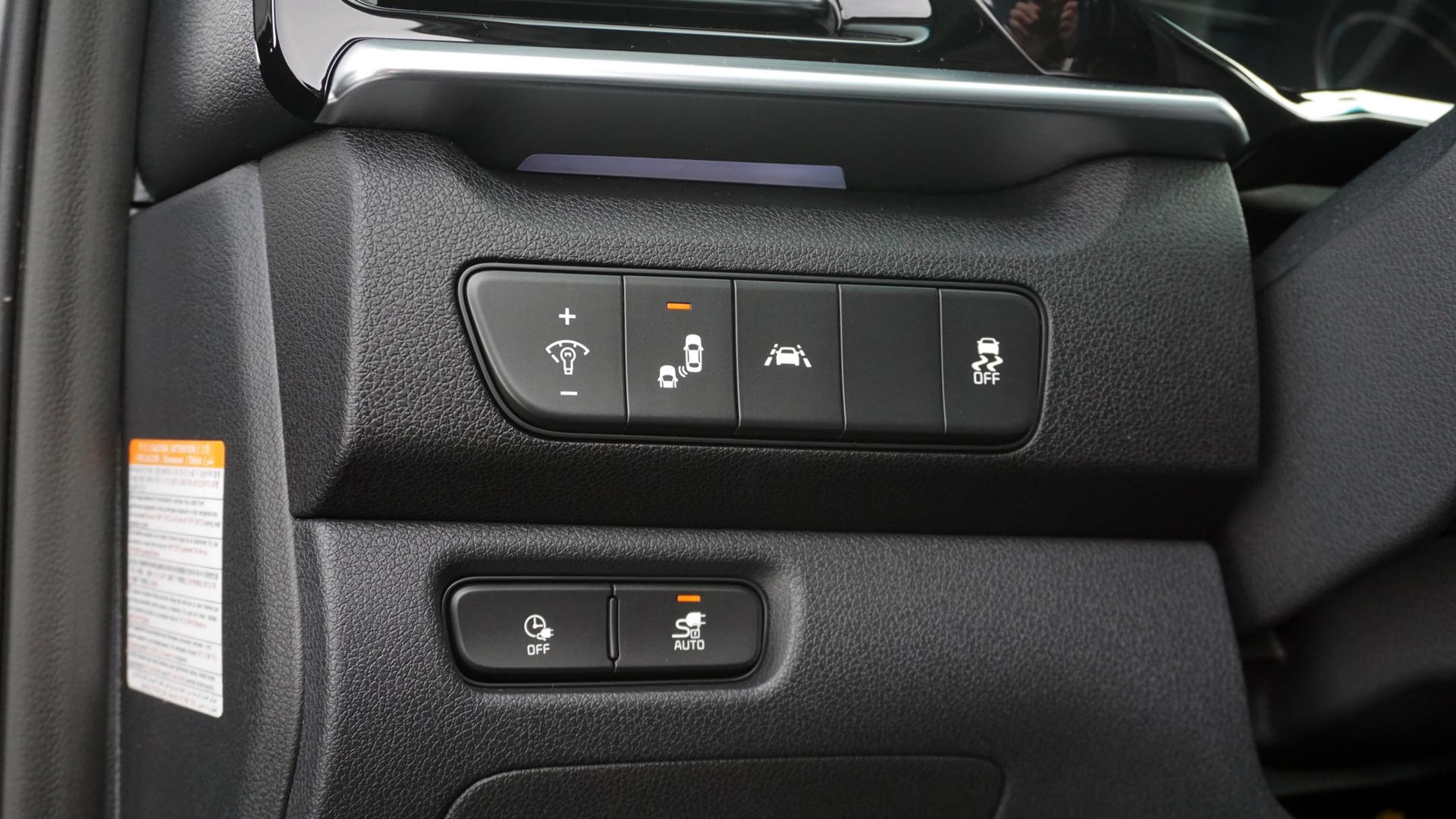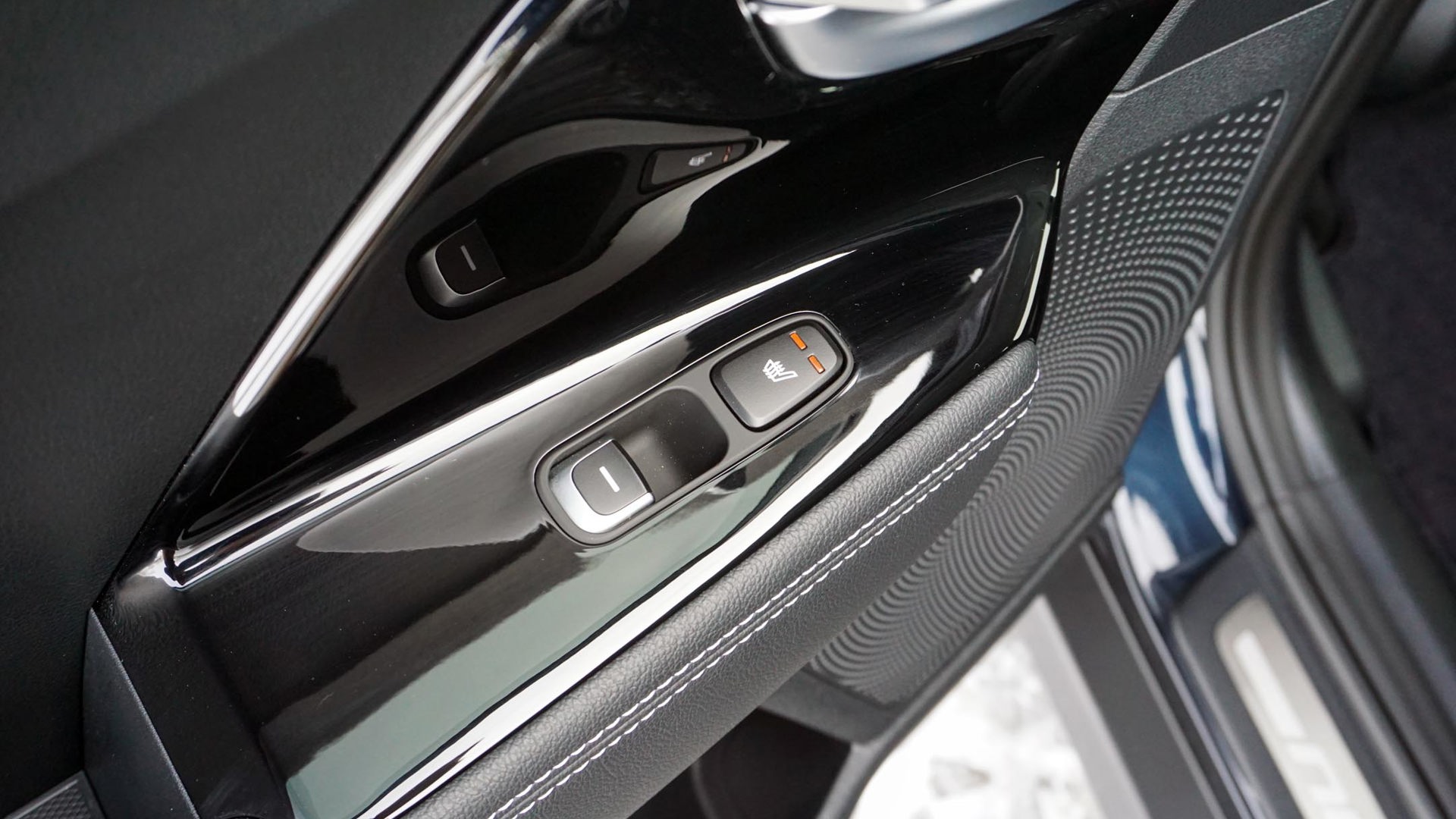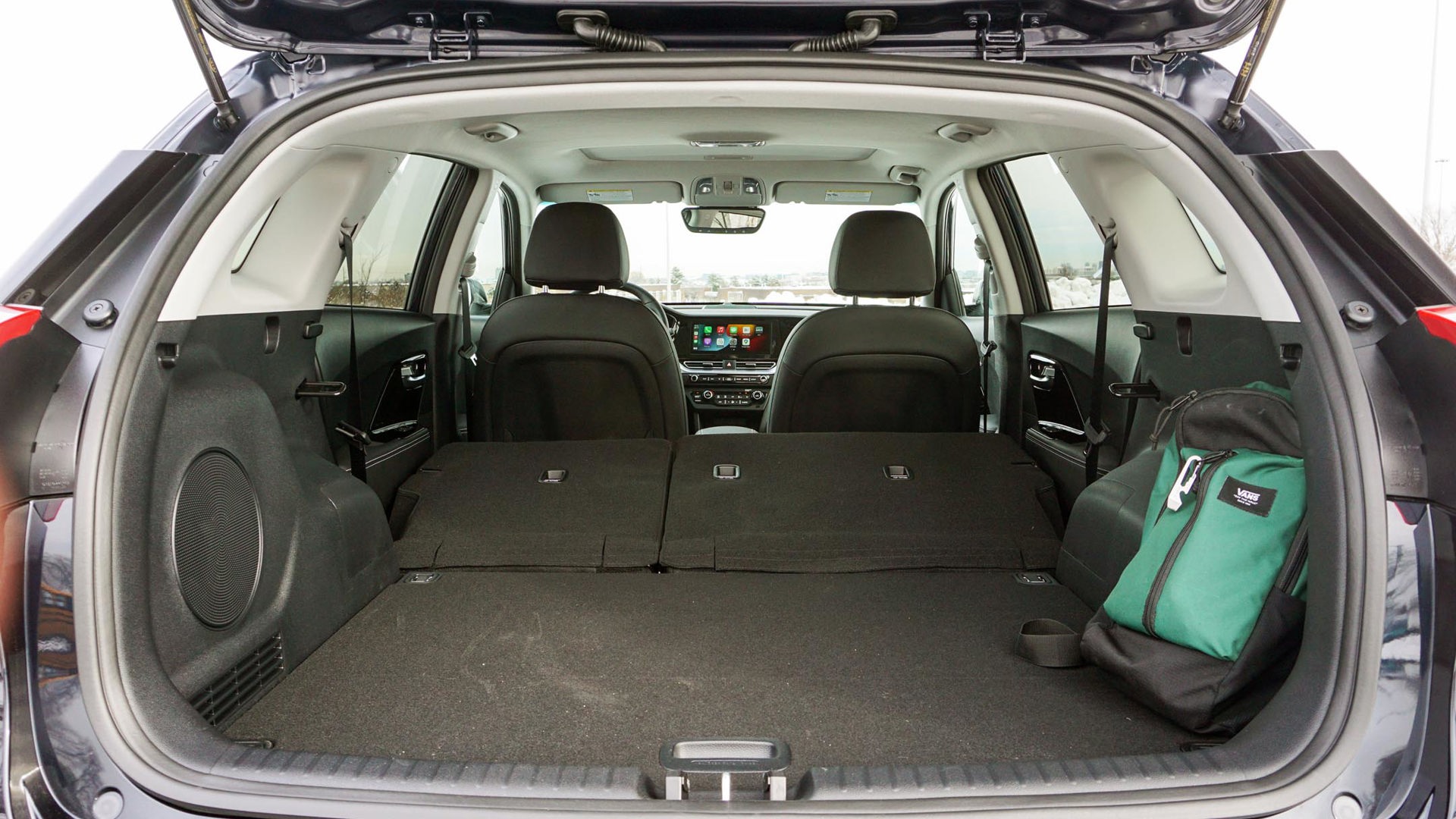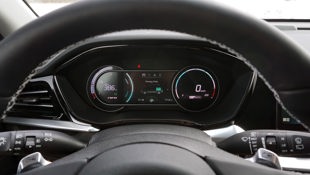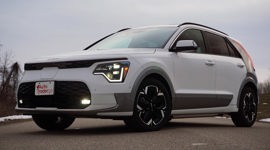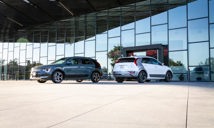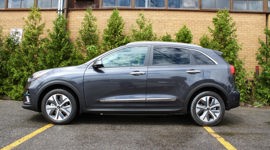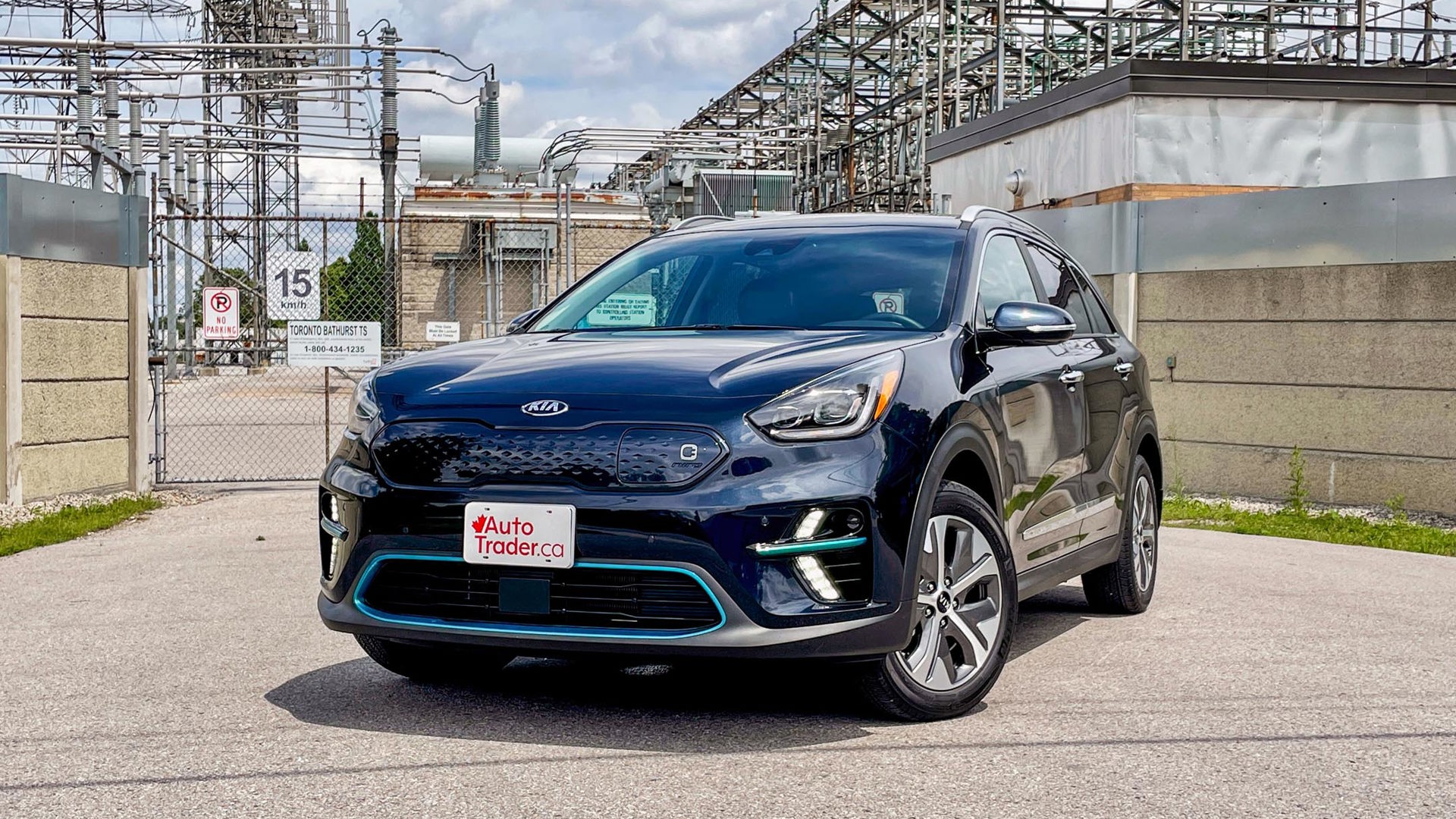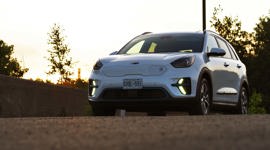 AutoTrader SCORE
AutoTrader SCORE
-
STYLING9/10
-
Safety7/10
-
PRACTICALITY9/10
-
USER-FRIENDLINESS10/10
-
FEATURES9/10
-
POWER9/10
-
COMFORT7/10
-
DRIVING FEEL9/10
-
FUEL ECONOMY8/10
-
VALUE6/10
Few cars in recent memory could be considered ahead of their time in the same way as the 2022 Kia Niro EV.
One in a set of triplets introduced by the brand – there are conventional hybrid and plug-in hybrid (PHEV) versions as well – this crossover/hatchback thing has toiled in obscurity while others of its ilk have enjoyed the spotlight. It isn’t especially quirky or minimalistic; instead, it’s about as disarmingly approachable as they come, and delivers just about everything a small electric vehicle (EV) should: decent driving range, tons of technology, and plenty of practicality.
Styling: 9/10
There was a time in the not-so-distant past when green vehicles were chided for their strange aesthetics and limited utility. They need to look like normal cars or five seats are a must – these were common watercooler refrains about cars like the Toyota Prius and Chevrolet Volt, among others. Of course, they were quirky by design, with an emphasis on aerodynamics; but such stand-out styling certainly wasn’t going to turn skeptics into believers.
So while its corporate cousin, the Hyundai Ioniq, followed the path of the Prius, the Niro went its own way. And while it doesn’t look completely conventional, its styling is a lot like that of the average five-door, albeit stretched just a bit. It’s perhaps not all that sleek, with a bit of a bulbous front end, but it manages to be both anonymous and special at the same time. Subtle teal accents on the bumpers front and back tell the Niro EV apart from its gas-electric siblings, as does the charging port where an upper grille would normally reside.
Nothing about the cabin signals that it’s anything but the average compact. While the top SX Touring trim tested here is stuffed with a bit too much glossy plastic trim, which is a magnet for fingerprints and dust particles, the Niro EV is a model of stylish simplicity. It’s not as minimalistic as, say, a Tesla Model Y or Ford Mustang Mach-E, both of which consolidate virtually all interior controls to massive central touchscreens, but this Kia is better for it.
User Friendliness: 10/10
A big reason why is approachability. The Niro EV is a turnkey car – not literally; it features keyless entry and push-button start – in the sense that there’s absolutely no learning curve whatsoever; simply get in and go. The HVAC and infotainment systems have all manner of buttons and dials, while all the switchgear is neatly labelled. Even the rotary gear selector, while not this author’s favourite method on the market, is placed logically on a floating portion of the centre console.
Run through a 10.25-inch touchscreen in the SX Touring trim (others get an eight-inch unit), the infotainment system is equally as agreeable, with a simple interface, Android Auto and Apple CarPlay smartphone integration, and good graphics and responsiveness. Kia also includes a shortcut button on the centre stack that can be programmed to pull up a favourite function – those smartphone connections, for example – without the need to navigate back to the home screen first, while the top trim’s built-in navigation system plots nearby public charging stations.
The simple act of entering and exiting the Niro is another of its finest attributes, with large door openings and a suitable height that doesn’t require occupants to climb up or drop down into – simply slide laterally and the job is done. And while it’s not towering like a minivan, this five-door offers excellent outward visibility through tall glass all the way around.
Practicality: 9.5/10
The Niro’s footprint is similar to that of the Kia Forte5 hatchback, but where that fellow Kia’s hindquarters are stylishly sloped, hindering overall utility as a result, there’s plenty of upright space here. Officially, there’s 629 L behind the back seats, which is actually less than the Forte5 offers, although it seems to be the result of a slightly taller load floor combined with a little less overall depth. Even so, cargo room is plentiful, while the rear seats fold nearly flat to provide 1,804 L in total.
Leaving the 60/40-split folding bench upright provides plenty of passenger space, with comparable rear-seat legroom to the larger Toyota RAV4 that’s available with hybrid and PHEV powertrains. While the lower cushion sits rather close to the floor, leaving tall occupants with their knees near their chins, it’s roomy enough for two – or even three – passengers to settle in on long trips.
The front half of the cabin is downright spacious, with the deep dashboard adding an extra sense of enormity. Even with the SX Touring trim’s sunroof there’s plenty of headroom, while cabin width is plentiful. That the Niro EV doesn’t require shift linkage means more console space for stuff, with three separate tiers of storage between the console bin, retractable cupholders, and lower pass-through that’s large enough for a handbag.
Comfort: 7.5/10
Any sore spots inside surround the materials used throughout, with this model saddled with stuff that doesn’t look or feel particularly pleasing. It goes beyond the glossy surfaces in this tester, too, with cheap and hollow plastic panels adorning the doors and dash. The leather upholstery that covers the seats in the SX Touring trim won’t be confused with what’s offered by premium brands, either, but the seats are fairly comfortable and feature eight-way power adjustability for the driver, while both are heated and ventilated here and even the rear seats have two-stage heat.
Both the SX Touring and EX+ trims also benefit from an integrated heat pump that recovers waste heat from the powertrain and uses it to warm the cabin – a novel concept that works while maximizing driving range. There’s also a driver-only mode that directs HVAC output through only those vents closest to the left-seat occupant for range-extending solo trips. Unsurprisingly, it’s not the warmest on cold winter days, but that’s why both trims also feature heated front seats and a heated steering wheel.
In terms of ride quality, while the Niro EV is far from uncomfortable, it’s fair to describe it as firm. With its 64-kWh lithium-ion battery pack spanning the length of the passenger compartment, there’s a general rigidity to the ride that’s characteristic of all-electric vehicles such as this. On top of that, Kia’s engineers elected for suspension damping that isn’t as cushy as it maybe could be, with pressure cracks and potholes feeling pronounced at low speeds.
Driving Feel: 9/10
There’s no hiding from its heft – at some 1,764 kg (3,889 lb), it weighs more than a RAV4 Hybrid – but the Niro EV drives more like its size than its weight. More specifically, with most of the additional weight it carries sitting down low because of the battery (for context, the hybrid Niro tips the scales at about 300 kg less) it feels planted to the ground but not like it’s anchored, with some genuine agility.
The handling is a highlight, too, and not just for those who enjoy driving. With an actual steering rack instead of a by-wire system, there’s connectedness and communication about what the front wheels are doing – perfect for knowing which direction the wheels are pointing in the event an evasive manoeuvre is required.
With three-stage regenerative braking, kinetic energy that would otherwise be lost when slowing down is instead fed into the battery for later use. Keeping some Gravol in the glovebox is advised so uninitiated passengers don’t suffer from motion sickness, but the very fact the system is adjustable means it can be shut off completely or ratcheted up to recover as much energy as possible. It’s also capable of one pedal driving, although the Niro EV won’t quite come to a complete stop on its own; to do so, simply apply the left-hand paddle on the steering wheel.
Power: 9/10
Has the lack of all-wheel drive held the Niro EV back from achieving the sales success it probably deserves? That wouldn’t be an unfair hypothesis, although it’s not necessarily something it needs – and it doesn’t mean winter tires are optional. In fact, given the immediacy with which torque gets to the front wheels, the benefits of seasonal rubber will be especially noticeable here.
That’s because there’s no waiting for a mechanical build-up of force; it’s like turning a lighting dimmer switch for more or less as required. The electric motor makes 201 hp and 291 lb-ft of torque, the latter of which being what turns into forward momentum – and there’s tons of it, with this little five-door darting around like a firefly. But in another of its commendable characteristics, it’s a perfectly suitable casual cruiser that can be driven like any other car, conventional or otherwise. The throttle pedal isn’t particularly touchy, so there’s no need to worry about taking off too quickly at unintended times.
Fuel Economy: 8/10
If there was anything the Niro EV lacked it would be a driving range worth bragging about. It’s not as if the 385 km it’s rated for between charges is underwhelming, but when more modern contemporaries boast numbers in the neighbourhood of 500 km, what this Kia’s capable of leaves something to be desired.
In reality, it’s more than enough for commuting duty – doubly so with regular charging – while the automaker claims it can achieve an 80 per cent charge on a DC fast-charger in a little less than an hour. Meanwhile, a Level 2 charger like the type that can be installed at home should do the job in a little less than 10 hours, ideal for off-peak overnight charging.
Picking up this tester on a cold day with a wet winter storm on the horizon, it managed to outdo its official consumption rate, albeit slightly, by burning through 18.1 kWh/100 km. There are more efficient EVs out there – some Tesla models, and even the Ioniq Electric, dip into the 15s – but it’s respectable given much of the 170 km covered was done on secondary and major highways and through blowing snow.
Value: 6.5/10
Unlike other EVs like the Nissan Leaf or Ford Mustang Mach-E, battery size is fixed across the all-electric Niro’s three-trim range. That means the same 385-km range no matter what, which makes the $46,790 starting price including a non-negotiable $1,795 freight fee a little easier to swallow – although not by much. Because all but the most expensive Leaf trim, including two with a similarly sized battery, cost less than the cheapest Niro EV, as do both Chevrolet Bolt models (the Bolt EUV can be had with packages that push the asking price higher).
This Kia’s pre-tax pricing looks even less competitive moving to the EX+ and SX Touring trims, which ring in at $52,490 and $56,490, respectively. That’s significantly less than the slightly larger Tesla Model Y but encroaches on Mustang Mach-E territory. Over at Hyundai, the Kona Electric that shares the same powertrain as the Niro EV but has slightly more range is offered in two trims that cost $45,524 and $51,024 before tax, respectively.
In its favour is that all three Niro EV trims qualify for the federal zero-emissions vehicle rebate, which cuts $5,000 from the asking price on a four-year lease or full purchase (shorter leases qualify for smaller rebates). Additionally, residents of British Columbia, Quebec, New Brunswick, Prince Edward Island, Nova Scotia, Newfoundland and Labrador, and Yukon have access to similar rebate programs that can be combined with the federal one for even more savings.
Features: 9.5/10
It’s at least a little easier to justify the asking price of this most expensive model given all that’s included for the money. The big touchscreen with built-in navigation, an upgraded stereo, heated and ventilated front seats, a heated steering wheel, heated rear seats, a sunroof – the list is extensive. Better still, when it comes to those climate-controlled seats, only the Kona Electric can be had with all of what’s offered here.
The Niro EV EX+ gets heated front seats and a heated steering wheel but skips the rest, although it shares the top trim’s heat pump, and while the base trim is fairly low on frills, it also gets perhaps the best feature of the whole lot: Kia’s connected smartphone app that allows the doors to be locked and unlocked, the cabin pre-conditioned, and the battery charged remotely.
Safety: 7.5/10
Advanced safety features are also reserved for the top trim, which is something of a disappointment. That means forward collision warning with automatic emergency braking, blind-spot monitoring with rear cross-traffic alert, lane keeping and following assistance, and adaptive cruise control can only be had with the SX Touring; the rest of the lineup gets nothing.
It all works well when equipped, however, with none of the micro-corrections experienced while testing the same lane-following function with the Kia Carnival. While it’s still not quite as smooth as a similar system from Nissan, which is probably the best on the mainstream market at the moment, it works well at following lane markings even through bends on the highway provided the driver’s hands remain on the wheel. Better still, lane-keep assist is a separate system that can still be used should comfort levels not align with the idea of a car steering itself.
The Verdict
It’s not just the shape, size, and overall use of space that make the 2022 Kia Niro EV ahead of its time amongst electric vehicles – it’s the way the brand blended those fundamentals with a tremendous approachability to emissions-free driving. Simply put, it’s among the most clever EVs on the market, but in a rather conventional way. Kia didn’t reinvent the wheel here; it simply made something familiar and efficient. Maybe it could benefit from some better materials inside, but it’s an impressive machine overall that’s expensive, yes, but it’s also one that delivers on the key tenets of electrification and usefulness.
| Engine Displacement | 150 kW |
|---|---|
| Engine Cylinders | Single electric motor |
| Peak Horsepower | 201 hp |
| Peak Torque | 291 lb-ft |
| Fuel Economy | 1.9 / 2.3 / 2.1 Le/100 km (17.0 / 20.6 / 18.6 kWh/100 km) cty/hwy/cmb; 385 km est. range |
| Cargo Space | 629 / 1,804 L seats up/down |
| Model Tested | 2022 Kia Niro EV SX Touring |
| Base Price | $54,695 |
| A/C Tax | $100 |
| Destination Fee | $1,795 |
| Price as Tested | $56,840 |
|
Optional Equipment
$250 – Gravity Blue Paint, $250
|
|
